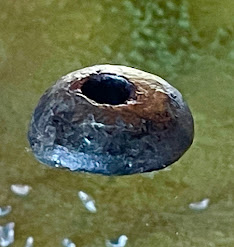Family
Our first trip to the rock was only ten days which seemed like plenty of time to do and see everything we wanted to do. One of our the goals was to explore my family roots and visit the small village of Moreton Harbour where my grandmother Elsie Brett was born on August of 1918. She immigrated to Canada and the big city of Toronto shortly after 1935 when she was just 16. If some of you are struggling with the term immigrated, you must remember that Newfoundland did not become part of Canada till 1949. What had planned to be a one day visit on that first trip turned into three days. See my blog “Back To The Rock For the First Time”, May, 2010. While I learned a few things about my grandmother, I was left with a lot more questions.
Research compiled over the next ten years has provided me with the names of my great grandfather and mother, great, great grandfather and mother and great, great, great grandfather and mother.
Great Grandfather- Wilfred Brett
Great Grandmother- Dulcie
Great, Great Grandfather- William Henry Brett
Great, Great Grandmother- Susan Jane (Forward)
Great, Great, Great Grandfather- Charles
Great, Great Great Grandmother- Julia
All who lived and died on the Rock.
Many headstones were old and erosion had worn away any chance of telling who was buried there.
The Brett family arrived in Moreton Harbour sometime between 1790 and 1818.
Like most, they established themselves as a fishing family.
Further research did not find any Brett's still living in Moreton Harbour but the name lives on by virtue of a fairly new street sign.
I did discover an interesting footnote during our trip. Nonie and I attended a shed party in Twillingate where I mentioned to our host that I had family from Moreton Harbour. Not missing a beat she broke into a rendition of “I's The B'y That Builds The Boat”, a well known Newfoundland folk song. For your listening enjoyment, I have attached a link to a YouTube video of a rendition sung by Great Big Sea.
I's the b'y that builds the boat
And I's the b'y that sails her
I's the b'y that catches the fish
And brings them home to Lizer
Chorus:
Hip yer partner, Sally Thibault
Hip yer partner, Sally Brown
Fogo, Twillingate, Moreton's Harbour
All around the circle!
Moreton Harbour gets a shout out.
Our visit to Rock was a success but there are still plenty of things we would have liked to do.
Would we return, you bet but there are too many other adventures on our Bucket List and we are running out of time.
If we were ten years younger, we would be back.
Even foggy and drizzly, it can still take your breath away. Though that might be the wind.
Despite driving over 1500 kilometres and with an estimated 120,000 moose on the loose, you would have thought one would have made the effort to pop out onto the highway and let us admire his giant rack. We will have to make do with this sad Irving gas station moose though you have to admit he has a pretty big rack.
"Long may your big jibs draw" everyone.









































